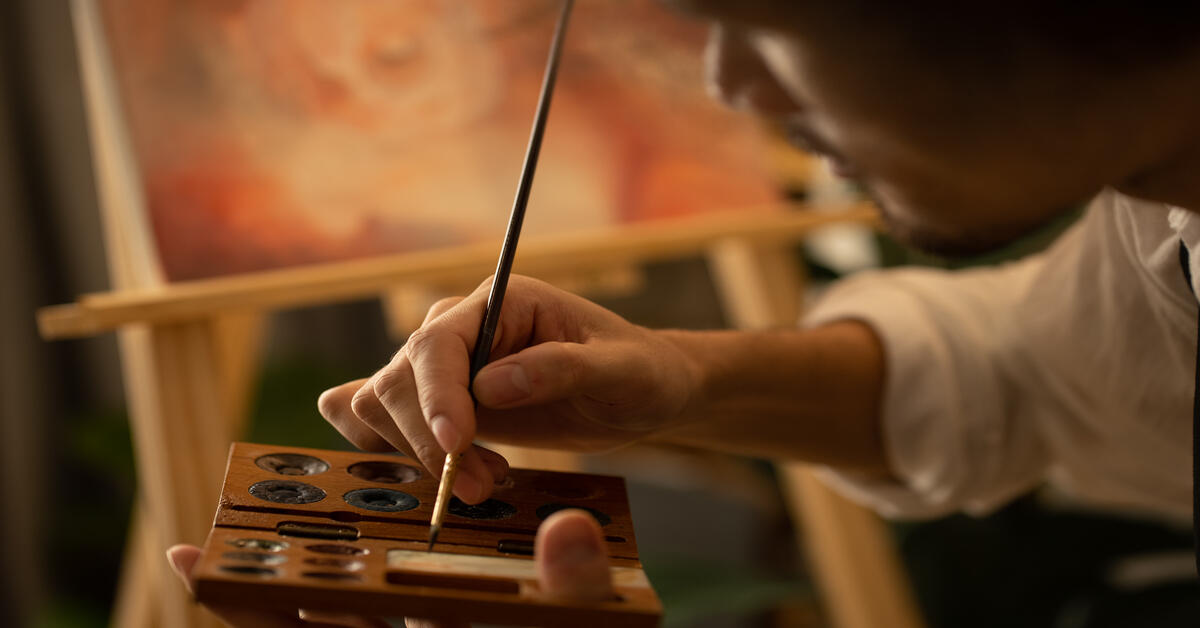Sound Design November 12, 2025

6 Artistic Techniques Spotlight? Master Timeless Creative Magic!
Every stroke in a masterpiece whispers a secret of human ingenuity, and this artistic techniques spotlight illuminates the craft behind timeless works. Whether you’re an aspiring artist or a passionate admirer, uncover how core methods like perspective, texture, and symbolism have evolved across eras to evoke emotion and tell profound stories.
This Artistic Techniques Spotlight will reveal how great artists have perfected their art, how their craft has changed over the years of human history, and what students, educators, and art lovers can learn about the great master artists, acting as a written artist skills masterclass. It does not matter whether you are holding a brush, a computer pen, or just a desire to appreciate the work, this experience shows us the craftsmanship that goes into the work.
Artistic Techniques and Why Do They Matter?
Techniques in art Artistic techniques are the means and procedures by which artists apply ideas to visual expression. Since shading and layering, a perspective and a symbolism, each technique is adding emotion, movement, and meaning to a piece.
In this Spotlight of Artistic Techniques we are informed that technique is no longer skill, but rather the connection between purpose and effect. Those who know the language of materials and shape would be able to make something simple and memorable to the eye.
Techniques Through the Ages
The history of art is an account of changing skills. Every period brought some variations in the means of human experience:
- Renaissance (14th -17th century): Artists such as Leonardo da Vinci and Michelangelo brought in the concept of linear perspective, chiaroscuro (light and shadow), and precision of the anatomy.
- Impressionism (19th century): Claude Monet and Pierre-Auguste Renoir have depicted the moments of light with their brush and vivid coloring in a loose manner.
- Modernism (20th century): Pablo Picasso and Georgia O Keeffe focused on abstraction, emotion, and symbolism.
- Digital Era (21st century): such artists as Beeple and Refik Anadol combine technology and imagination and form immersive digital worlds.
Every age had its new input, they invented the techniques of Art, this is how people proved that The Artistic Techniques Spotlight is a constantly developing narrative of what people can create.
The Building Blocks: Core Artistic Techniques
In order to fully enjoy art, we have to know the tools that artists have to work with in order to create meaning. The following are some of the six main techniques that identify classical and modern art:
- Line and Form: The body of any composition, forms a direction and motion.
- Color Theory: It is the utilization of color, tones and contrasts to bring out feeling and harmony.
- Texture: Creating depth and realism with the help of brushwork, overlaying, or digital gradients.
- Composition: To be able to balance the visual aspects to direct the eye of the viewer.
- Perspective: This is the process of producing illusions of three- dimensionality on a surface that is two-dimensional.
- Symbolism: Hiding some meaning, or references to the culture in the visual details.
In every spotlight of the Artistic Techniques, it is evident that the mastery is not in complexity, but in the combination of these fundamentals by an artist to form a story.
Case Study 1: Leonardo da Vinci – The Scientist of Light
The style of Leonardo da Vinci was analytical and poetic. He was able to study anatomy, optics and geometry to hone his art. His sfumato, or blending effect and eliminating lines hardness, gave his subjects softness with real-life feel and emotionalism.
In this Spotlight of Artistic Techniques, we learn that there is no separation of art and science. His methods give us a reminder on the fact that creativity depends on curiosity and observation. His Mona Lisa is not a mere portrait; it is all about patience, exactness and vision.
Case Study 2: Vincent van Gogh – Emotion in Every Stroke
Vincent van Gogh is hardly an artist capable of expressing emotion with less vigour. His turbulent skies and brushwork made simple scenery to be emotional. The impasto-thick, expressive style, in which strokes of paint are made thickly and in heavy layers, became characteristic of him.
This Spotlight of Artistic Techniques shows the extension of the soul of the artist in his technique. There is a rhythm in the brushstrokes Van Gogh uses and there is a lesson in this: that art is not about perfection, but about connecting.
Case Study 3: Frida Kahlo – Symbolism and Self-Expression
Frida Kahlo employed the aspect of symbolism and surrealist art to express her suffering, her strength and her culture. Her complex self-portraits are a mixture of reality and fantasy with references to color and iconography that are based on Mexican traditions.
The Artistic Techniques Spotlight on Kahlo illustrates how the personal experience may be turned into a universal message by the use of technique. The contrast and framing are carefully used to encourage the audience to look past the beauty and consider emotion as the real subject of art.
Case Study 4: Claude Monet – The Art of Light and Time
The style of Claude Monet transformed the perception of the world as regards to color and atmosphere. He took light on water, architecture, and landscapes in transient brush strokes and layers of broken color, using rapid and visible strokes of the light.
This Artistic Techniques Spotlight on Monet is an indication that discipline and spontaneity can be employed together. He did the same scene at various times of the day to learn the behavior of light, a concept that inspired generations of impressionists and photographers.
Case Study 5: Yayoi Kusama – Immersive Infinity
Nowadays, Yayoi Kusama changed repetitive patterns into self-identity and existence meditations. Her mirror rooms and polka dots are her trademark that makes the viewers enter the art.
This Spotlight on Artistic Techniques can help you see that innovation is more than a matter of materials, it is about redefining the interactions between art and space and emotion. The art of Kusama is based on the boundary between the field of psychology and aesthetics, proving that technique is a one-way operation to health and freedom of oneself.
How to Teach and Learn Artistic Techniques
In art education, technique serves as both a foundation and a freedom. Teaching technique means giving students the tools to express themselves, not to confine them.
Here’s how educators can make the Artistic Techniques Spotlight a transformative learning experience:
- Encourage Observation: Teach students to see details others overlook.
- Promote Experimentation: Let them mix materials and methods fearlessly.
- Integrate History: Link technique to cultural and historical context.
- Use Technology: Blend traditional media with digital tools for modern relevance.
The goal isn’t imitation but inspiration, helping learners understand that every stroke carries purpose.
Artistic Techniques in the Digital Age
Digital art has opened up the frontiers to creativity. Such programs as Procreate, Adobe Fresco, and AI-based design applications enabled the ability to recreate centuries-old methods in the virtual space.
Traditional principles such as layering, lighting and composition are necessary even when pixels are used instead of paint as we see in this Artistic Techniques Spotlight. Artists working in digital art are combining photography, three-dimensional modeling as well as motion design to make pieces that move, breathe, and evolve as the observer looks at them.
The Crossroads of Technique and Innovation
The modern artists no longer use brushes and canvases to create their works, they write code, carve and create with virtual reality. The Artistic Techniques Spotlight brings about a new fact; innovation does not remove tradition, but prolongs it.
Such artists as Refik Anadol and Trevor Paglen demonstrate that algorithms can become brush paint, and data can become poetry. It is the same interest that motivated da Vinci that motivates the digital pioneers of the 21st century.
Final Thoughts
Artistry does not only lie in its appearance, but also in its creation. All the masterpieces, the Last Supper by Da Vinci, or the infinity rooms by Kusama, are a lesson to be curious, patient, and see.This Spotlight on Artistic Techniques is a good reminder that technique is not the oxymander of creativity, it is its base. Both artists, with paint, pixels, or clay, are adding a new book to the visual narrative of mankind. The art world will always be our strongest means of communication so long as there are people to imagine, experiment, and speak out, the art world will be our living language that will not require any form of translation.

